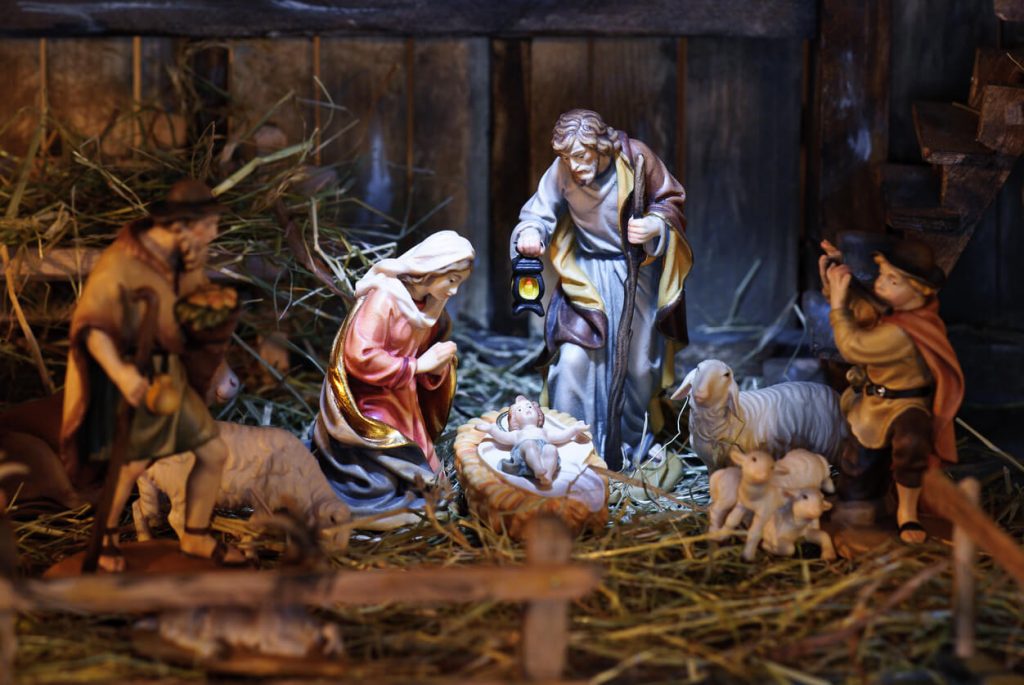“The Chronicles of Narnia: Prince Caspian” comes out this weekend in theaters.
It’s been nearly 60 years since the CS Lewis classic was published.
I thought it might be fitting, before I go see the film, to reflect on one of the rich ideas found in the tale of Caspian: the theme of faith.
Faith, to some, may seem like a drab topic, but I think we’ll find that Lewis’ account of the topic is far richer than most of our theological definitions.
Narnia: A Story of Faith
Many, many generations have passed (in Narnian time) since the kingship of the four Pevensie children. The world of Narnia is a very different place. The stories of Aslan, his death on the stone table, his resurrection, the defeat of the White Witch, and the harmony between the talking animals and their human rulers has been all but forgotten. Many count Aslan as a legend. Yet an uprising has begun: a rebel force led by Prince Caspian, heir to the throne of Narnia, has joined with the remaining talking animals (now in hiding) and is about to go to war against his uncle, the evil King Miraz. Caspian is one of the few who believe the ancient stories of Aslan and desires to see his world return to what it used to be generations ago.
The four Pevensie children have returned from our world to Narnia, a Narnia on the brink of war. After some adventures of their own, as well as being updated on all that is going on in Narnia, the children set out to join with Caspian to help him take Narnia back for the talking animals. Lucy, the youngest of the children, is awoken one night on their journey. Lewis writes, “Lucy woke out of the deepest sleep you can imagine, with the feeling that the voice she liked best in the world had been calling her name.” She walks aways into the wood and finds Aslan. As they talk, Aslan calls her to follow him:
“If you go back to the others now, and wake them up; and tell them you have seen me again; and that you must all get up at once and follow me—what will happen? There is only one way of finding out.”
“Do you mean that is what you want me to do?” gasped Lucy.
“Yes, little one,” said Aslan.
“Will the others see you too?” asked Lucy.
“Certainly not at first,” said Aslan. “Later on, it depends.”
“But they won’t believe me!” said Lucy.
“It doesn’t matter,” said Aslan.
“Oh dear, oh dear,” said Lucy. “And I was so pleased at finding you again. And I thought you’d let me stay. And I thought you’d come roaring in and frighten all the enemies away—like the last time. And now everything is going to be horrid.”
“It is hard for you, little one,” said Aslan. “But things never happen the same way twice. It has been hard for all in Narnia before now.”
Lucy buried her head in his mane to hide from his face. But there must have been magic in his mane. She could feel lion-strength going into her. Quite suddenly she sat up. “I’m sorry, Aslan,” she said, “I’m ready now.”
“Now you are a lioness,” said Aslan. “And now all Narnia will be renewed. But come. We have no time to lose.”
So Lucy calls her siblings to follow her as she follows Aslan. The children agree, somewhat reluctantly, to follow Lucy. They are unable to see Aslan with their own eyes as Lucy can with hers. As they follow her, one at a time they each begin seeing Aslan. At first Edmund can start to see Aslan’s shadow. Peter then begins seeing glimmers of Aslan’s form in the moonlight. Finally all the children are able to see him fully.
What is Faith?
All of this reminds me of how faith is defined in the New Testament: “Now faith is the assurance of things hoped for, the conviction of things not seen” (Hebrews 11:1). The word “assurance” can also be translated “substance” or “reality.” Faith is also the “conviction” of things unseen. In other words, faith is that disposition in our hearts that makes the things we long for seem real, that deep conviction that enables us to feel and act as if certain unseen things are real. Faith is the eye of the soul seeing the invisible and heavenly realities.
The Greek term most often translated “faith” in our English versions of the Bible is πίστις, pistis. Very simply it can be translated as “belief.” But in the Jewish culture of Jesus’ day faith was more than belief. It was thought of as a firm and welcome conviction and confidence in God. The rabbinic idea of faith was always linked to action and obedience: they were never separated. Faith is not merely a mental belief but a drive to live consistently with that belief.
The Old Testament corollary to faith is “trust.” Read through the great stories of those who trusted God against all odds. For the Hebrews, trusting God was an anticipation that God would act. It is a hope in Him that results in an inner stillness and calm, a freedom from anxiety, rash action or self-reliance. Faith says, “God is faithful.”
Faith is Chutzpah
In Prince Caspian, Aslan the Lion is not a figment of their imaginations. He is real. The children’s faith in him does not make him real, but their faith does make him real to them. As Aslan becomes more real, as they encounter him with their new eyes of belief, the very first thing that changes in them is their courage.
CS Lewis understood something about the nature of real faith: it makes us courageous, bold, and valiant, or as the Hebrews put it, it gives us chutzpah.
There is no English word for chutzpah. It can be described as a brazen tenacity, gall, nerve, guts, a presumption that borders on looking arrogant, and ends up being an act of worship.
Consider the stories of faith in the Gospels: you’ll see the chutzpah.
(1) In Mark 2 Jesus is in a Capernaum home and is surrounded by the crowds. People are pressing in all around to see and hear Him. Four men are desperate to get their paralyzed friend to Jesus. There’s no way to get through the thick crowds. So they climb to the roof and begin to tear a hole open right above Jesus. They lower their friend down to Him on a mat. It says in the text that Jesus saw their faith. Matthew and Luke make the same observation about this incident: He saw their faith.
Now it might be easy for us to say that Jesus, being a prophet, looks into their hearts and sees the presence of real faith. But a more natural reading of the text is that Jesus see evidence of their faith by what they were doing. These men have no thought of the property damage. No thought of how foolish they look. They are determined to get their friend healed. They have the chutzpah.
(2) Twice in the Gospel of Matthew Jesus notes the “great faith” of certain people. The first is a Roman centurion. The centurion desperately wants Jesus to heal his servant, but doesn’t consider himself worthy to have Jesus come to his house. He tells Jesus, “Just say the word, and my servant will be healed.” This man needs no parade of onlookers coming to his home. He needs no fancy displays of power. He only needs to hear Jesus say the word. This is a bold statement that expresses the deepest confidence. He has chutzpah.
(3) The second time Jesus notes someone’s “great faith” is when a Canaanite woman asks Him to heal her daughter. He tries to turn her away because she is not realistically a part of his mission: He says He is sent only to the lost sheep of Israel, not to the Gentiles. “It isn’t right to feed the children’s bread to the dogs,” He says. This only entices her more. Her reply is shocking, “Yes, Lord; but even the dogs feed on the crumbs which fall from their masters’ table.” Though Jesus and His disciples turn her away several times, she does not give up. She will not be turned away. She boldly asks again and again. She has chutzpah.
(4) In the book of Acts, a man named Joseph is given the nickname “Barnabas,” meaning “son of encouragement.” He is known for his encouraging and empowering words in the church community. When he is sent to Antioch, he “exhorted them all to remain faithful to the Lord with steadfast purpose” (11:23). What enables him to do this? The text tells us: “for he was a good man, full of the Holy Spirit and of faith” (11:24). His brimming faith is contagious. Despite the immaturity of the infant church and the boiling persecutions that surround them, Barnabas’ faith is intoxicating and empowering. He has chutzpah.
Faith, in these stories, is not a mere belief. It is a conviction that propels someone forward despite any opposition.
Real Faith: The Key to Prayer
For Jesus, this type of faith was so attractive and so rare to find. Consider how he taught his disciples to pray in faith to the Father. He teaches His disciples in the form of a rabbinic parable:
Suppose a man receives some surprise visitors late at night. In the spirit of hospitality in the Near East, he brings them into his home but he has no food to give them after their long journey. He quickly leaves his house and goes next door. It is late, close to midnight. He knows everyone else in his town is likely going to be sleeping. But he goes anyway. He pounds on his neighbor’s door, asking for three loaves of bread to set before his guests. At first his neighbor is put off by the request. “Come on,” he thinks, “it’s the middle of the night, I’m in bed, my children are asleep, and you’re pounding on my door asking for bread.”
Jesus says, “I tell you, even though he will not get up and give him anything because he is his friend, yet because of his persistence he will get up and give him as much as he needs” (Luke 11:8). The word for persistence here is αναιδεια, and can be translated boldness, or shameless insistence. Jesus is giving His disciples a picture of faith operating in prayer: it is a bold, persistent, shameless, never-giving-up attitude. It is chutzpah.
The Amplified version of the New Testament captures the essence of the next verse: “So I say to you, Ask and keep on asking and it shall be given you; seek and keep on seeking and you shall find; knock and keep on knocking and the door shall be opened to you” (Luke 11:9).
Real Faith is Rare
Twice the author of the book of Hebrews tells his readers to imitate the faith of those who had gone before them (Hebrews 6:12; 13:7). This is more than simply imitating their theological beliefs. What did the faith of these saints look like in operation? It was an “earnestness” to love and do good to the very end; it was the very opposite of sluggishness; it was an assurance of God’s eternal promises that motivated devotion and godliness (6:10-12).
This kind of faith is rare. One time Jesus spoke about the day of His return to earth and asked this haunting question: “When the Son of Man comes, will he find faith on earth?” (Luke 18:8)
So we long for this quality of faith. The author of Hebrews goes on to tell us how to have it:
1. Fix your thoughts on God’s covenants – In His covenants, God has shown us two unchangeable realities. First, God cannot lie, so anything He says is true. Second, God guarantees His promises with an oath: He ratifies solemn and holy covenants with His people. “God desired to show more convincingly to the heirs of the promise the unchangeable character of his purpose, he guaranteed it with an oath” (Hebrews 6:17).
2. Fix your thoughts on the Forerunner – “We have this as a sure and steadfast anchor of the soul, a hope that enters into the inner place behind the curtain, where Jesus has gone as the Forerunner on our behalf” (Hebrews 6:19-20). The narratives of Jesus’ life, death, resurrection and ascension to heaven need to be etched into our souls. As we meditate on the One who went before us, our anchor of hope seems all the more secure, because we know HE holds the other end of it. Our hope in God’s eternal promises rests in the historical reality of Jesus of Nazareth: His literal, physical resurrection, His ascension to heaven and coronation as the High King and Priest of heaven.
With this kind of faith brewing in us, let us approach God boldly in prayer. Let us live knowing that God is recreating this world as He has promised to do, and one day He will finish this new creation. Let us live knowing that Jesus is the Herold of the resurrected world-to-come. As His followers, filled with His Spirit, we are now new creations as well, the opening act.







what a lame movie, so childish. NEEDS MUCH IMPROVEMENT. I liked the 1st one better, if there was no aslan would have been great and the moving trees.
the makers of Prince Caspian kept to the original story better than i would have expected… i had heard they were going to make it into a silly pure-action flick, but thankfully this was not the case
I did see the movie this weekend, and I have many positive things I could say about it. This movie, however, definitely deviated from the original story in significant ways. The main differences revolved around character development. In the book Lewis take much more time developing the characters and their personal journeys. In the movie, they rush to the action pretty quickly. The character development happens amidst the action, and as much as I didn’t like the changes, I must admit, they did work for the medium of film.
There is a lot of talk going around about using these films for Christians to share their faith. While I love the zeal behind this idea, in a way it somewhat cheapens what Lewis was trying to do when he wrote the books.
Lewis scholars have continually pointed out that he did not set out to write a Christian allegory. He began writing a children’s story that captured his own imagination and wonder, and then much of his Christian worldview bled through the words. He did not write it to explain Christian imagery or theology.
Lewis did not believe we needed more people writing Christian books as much as we needed more Christians writing good books. Bruce Edwards, a Lewis scholar and a professor of English at Bowling Green State University (my alma mater), says, “With Lewis, the story is the thing. You ought to read the lines first. Then you can read between them.”
Lewis wrote an article that appeared in the New York Times Book Review called “Sometimes Fairy Stories May Say Best What’s to Be Said.” In it he denounced as “moonshine” the idea that he wrote the Narnian chronicles to proselytize the young. The lion Aslan, he wrote, bounded into his imagination from his experience as a Christian, coming to him naturally as should all good writing.
What was his motivation? He writes:
“I thought I saw how stories of this kind could steal past certain inhibitions which had paralyzed much of my own religion in childhood. Why did one find it so hard to feel as one was told one ought to feel about God or about the sufferings of Christ?
“I thought the chief reason was that one was told one ought to. An obligation to feel can freeze feelings. And reverence itself did harm. The whole subject was associated with lowered voices, almost as if it were something medical.
“But supposing that by casting all these things into an imaginary world, stripping them of their stained-glass and Sunday school associations, one could make them for the first time appear in their real potency? Could one not thus steal past those watchful dragons? I thought one could.”
It is best, I think, to let the story speak for itself, and then share how the story has captivated our own imaginations, how it has captured our own hearts, and how it has deepened our own faiths.